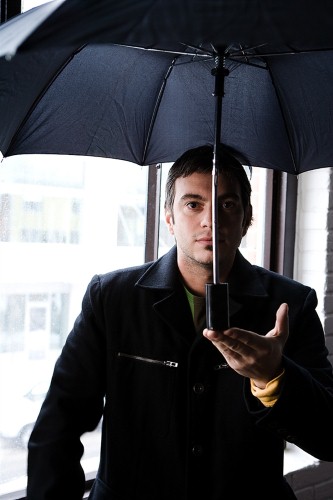Rihanna, in one of her hit singles, suggests standing under her umbrella. As so many people listened to her, a small business should follow her example and take advantage of the marketing opportunities provided by rain prevention gear.
These companies are in luck – March is National Umbrella Month. Promotional products given out during this time can be targeted toward this unique theme. The importance and daily usability of umbrellas should not be discounted by a promotional advertising scheme, but entrepreneurs should first familiarize themselves with the history of this practical item.
According to World Wide Words, the term umbrella dates back to the 1600s and comes from the Italian word for a sun shade. This itself comes from the Latin word for shadow – umbra. Multiple sculptures and paintings from around the world show the use of parasols in ancient settings, including the empires of ancient Egypt, Rome and Greece. In locations like Egypt that experienced little precipitation, umbrellas were made out of lightweight materials like palm fronds that could block out the sun during clear weather. The more common rain prevention design saw use in temperate areas that experienced storms and showers on a more frequent basis.
Now that you understand a little bit about the history of umbrellas, it’s time to break this device down into its structural components. The tip that protrudes above the canvas is called the ferrule. This little knob anchors the inner tube and ring to the flexible material that makes up the canopy, a fancy name for the cloth that acts as the physical rain-shield. A system of foldable ribs give this material form and shape, and a top spring and stretcher slides up and down the main tube to contract or expand. Most modern umbrellas are equipped with a crook handle made of wood or metal. A great diagram of the common umbrella is available on Umbrellaman’s UK website.
So, besides protecting people from the rain and sun, what can an umbrella do? One notable example is of the role these items play in photography. There are two ways an umbrella can help a photographer searching for the perfect picture, and both have to do with lighting. A reflector can be made of shiny material and direct soft or bright light on a subject or setting, depending on the situation. This is most commonly employed for graduation, acting headshots and other portraits where the lighting needs to be perfect. The other use is for when photographers need reduced lighting – in outdoor shoots, umbrellas can limit the glare from the sun or other reflective lights.
During National Umbrella Month, a small business should consider handing out promotional products in the form of umbrellas. As these executive gifts have a multitude of uses, they are very likely to be used by potential customers. For example, they are practical for any activity that takes place outdoors – golfers can use them on the green, concertgoers can stay dry during rainy festivals and reporters can employ them for perfect camera lighting. Daily use is responsible for high visibility, which is something that every advertising company targets.
Umbrellas do not have to be the central point of a promotional marketing strategy, either. Instead, they can be given out to compliment tradeshow giveaways or in a gift bag that includes promotional pens and custom coffee mugs.
With a proper brand logo and the right target audience, an umbrella can be a great promotional advertising tool for a small business or a large corporation.

